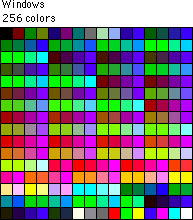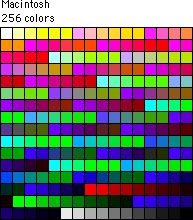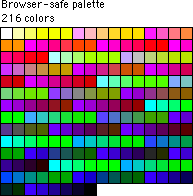"Browser-safe" colors
The color management system currently used by Web browser software is based on an 8-bit, 216-color (not 256) palette. The browser-safe color palette is a solution devised by Netscape to solve the problem of displaying color graphics in a similar way on many kinds of display screens, with browsers running under different operating systems (such as Macintosh, Windows, and UNIX). Because a majority of the Web audience years ago had 8-bit display screens, 256 colors was the upper limit for the color palette. But the various versions of the Windows operating system (which currently represent about 95 percent of the microcomputer market) reserve 40 colors for displaying such graphic interface elements as windows, menus, screen wallpaper, icons, and buttons, which leaves just 216 colors to display everything else. The 216 colors chosen by Netscape are identical in both the Macintosh and Windows system palettes. Although the browser-safe color scheme originated at Netscape, at present both of the dominant Web browsers (Netscape Navigator and Microsoft Internet Explorer) use the same color management system.
Most Web users have computers and monitors set to "thousands" or "millions" of colors, so the importance of the so-called Web-safe palette has sharply diminished in the past few years. When the user has a monitor set to thousands or millions of colors all colors display properly, so there is no longer any need to restrict your color choices to the 216 Web-safe colors.



|
